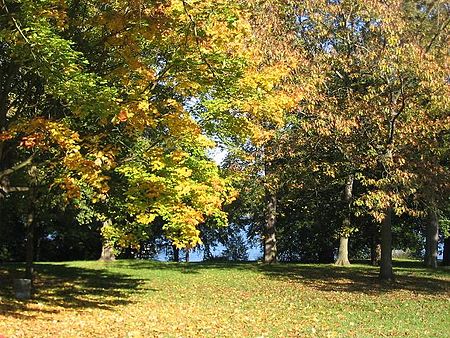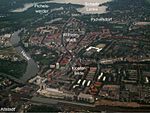Tiefwerder encompasses both a village and a Werder along the Havel River in the Berlin district of Spandau. While the village of Tiefwerder, along with the neighboring southern port of Spandau, falls under the jurisdiction of the district of Spandau, the surrounding forested areas, meadows, and water areas of the Werder are administratively part of the district of Wilhelmstadt.
An early Slavic settlement existed at Faulen See until the 13th century. The village of Tiefwerder was established as a colonist village in 1815. It was during this time that descendants of the Spandau Kietz fishermen were resettled on the Werder. Today, a significant portion of the historic houses lining the village street has been preserved and is recognized as the entire ensemble of the colonist settlement Tiefwerder. The building at Dorfstraße 5 from 1895, which has been home to the Ballhaus Spandau since the 1920s, is also a listed building. Additionally, the Tiefwerder waterworks, built in 1914, played a crucial role by supplying drinking water to six Berlin districts.
To the south and east, the village of Tiefwerder is bordered by the Tiefwerder Wiesen landscape conservation area. This area, intersected by ancient arms of the Havel River, stands as Berlin's last preserved natural floodplain and a crucial spawning ground for pike, contributing significantly to species protection efforts. It boasts a diverse landscape, featuring wet meadows, remnants of floodplain forests, and reed beds with natural land-water transitions. Due to the numerous watercourses and settlements along the ditches, Tiefwerder is also known as the "Little Venice of Spandau".










